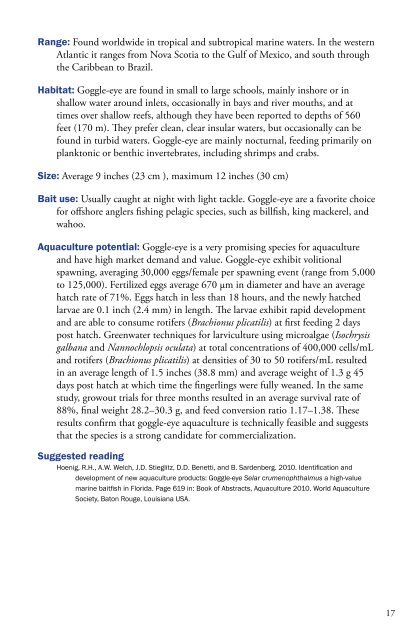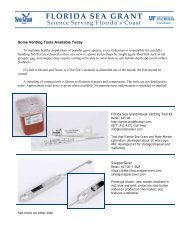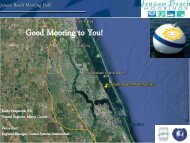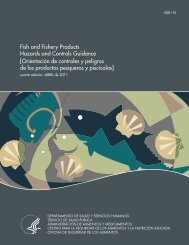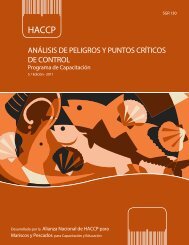MARINE BAITFISH
Growing Marine Baitfish - Florida Sea Grant
Growing Marine Baitfish - Florida Sea Grant
Create successful ePaper yourself
Turn your PDF publications into a flip-book with our unique Google optimized e-Paper software.
Range: Found worldwide in tropical and subtropical marine waters. In the western<br />
Atlantic it ranges from Nova Scotia to the Gulf of Mexico, and south through<br />
the Caribbean to Brazil.<br />
Habitat: Goggle-eye are found in small to large schools, mainly inshore or in<br />
shallow water around inlets, occasionally in bays and river mouths, and at<br />
times over shallow reefs, although they have been reported to depths of 560<br />
feet (170 m). They prefer clean, clear insular waters, but occasionally can be<br />
found in turbid waters. Goggle-eye are mainly nocturnal, feeding primarily on<br />
planktonic or benthic invertebrates, including shrimps and crabs.<br />
Size: Average 9 inches (23 cm ), maximum 12 inches (30 cm)<br />
Bait use: Usually caught at night with light tackle. Goggle-eye are a favorite choice<br />
for offshore anglers fishing pelagic species, such as billfish, king mackerel, and<br />
wahoo.<br />
Aquaculture potential: Goggle-eye is a very promising species for aquaculture<br />
and have high market demand and value. Goggle-eye exhibit volitional<br />
spawning, averaging 30,000 eggs/female per spawning event (range from 5,000<br />
to 125,000). Fertilized eggs average 670 µm in diameter and have an average<br />
hatch rate of 71%. Eggs hatch in less than 18 hours, and the newly hatched<br />
larvae are 0.1 inch (2.4 mm) in length. The larvae exhibit rapid development<br />
and are able to consume rotifers (Brachionus plicatilis) at first feeding 2 days<br />
post hatch. Greenwater techniques for larviculture using microalgae (Isochrysis<br />
galbana and Nannochlopsis oculata) at total concentrations of 400,000 cells/mL<br />
and rotifers (Brachionus plicatilis) at densities of 30 to 50 rotifers/mL resulted<br />
in an average length of 1.5 inches (38.8 mm) and average weight of 1.3 g 45<br />
days post hatch at which time the fingerlings were fully weaned. In the same<br />
study, growout trials for three months resulted in an average survival rate of<br />
88%, final weight 28.2–30.3 g, and feed conversion ratio 1.17–1.38. These<br />
results confirm that goggle-eye aquaculture is technically feasible and suggests<br />
that the species is a strong candidate for commercialization.<br />
Suggested reading<br />
Hoenig, R.H., A.W. Welch, J.D. Stieglitz, D.D. Benetti, and B. Sardenberg. 2010. Identification and<br />
development of new aquaculture products: Goggle-eye Selar crumenophthalmus a high-value<br />
marine baitfish in Florida. Page 619 in: Book of Abstracts, Aquaculture 2010. World Aquaculture<br />
Society, Baton Rouge, Louisiana USA.<br />
17


